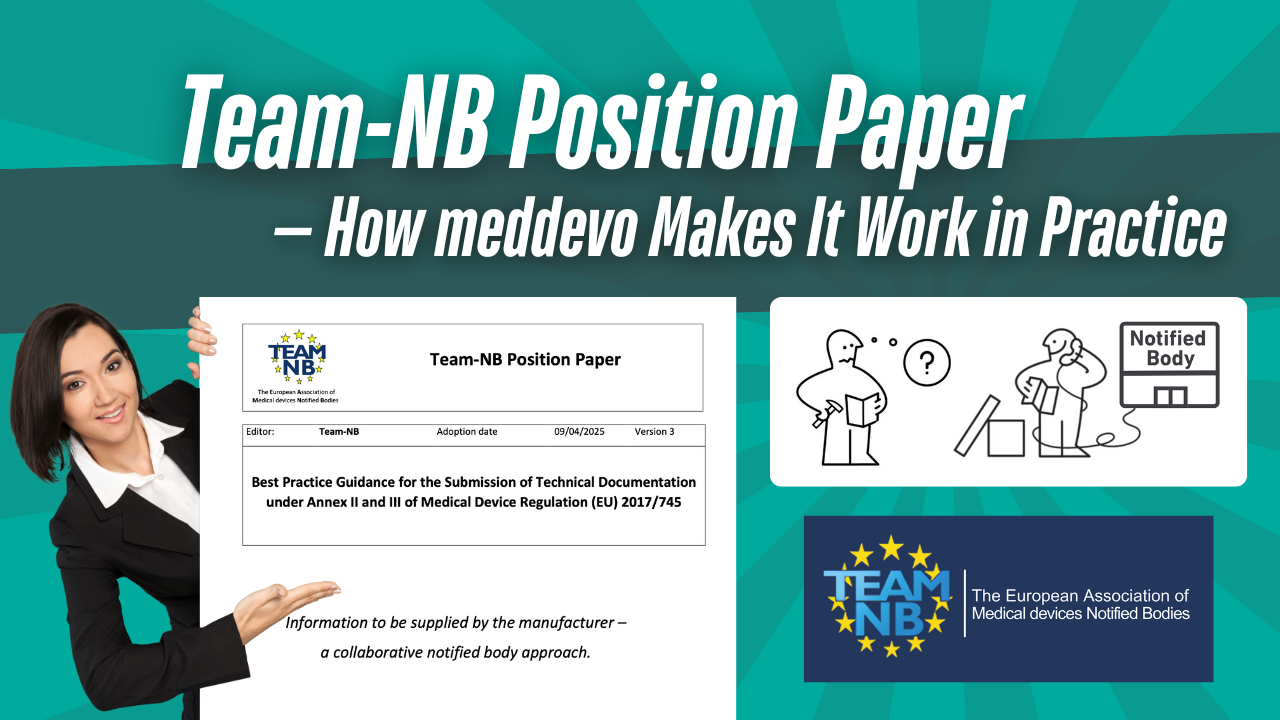TÜV Rheinland: EU-MDR & Digitalization
Interview with Michael M. Kania, who already spoke at the TÜV Rheinland 8th Nürnberg Medical Devices Conference about the advantages of digitalization in connection with the challenges of EU-MDR.
English Translation. Original Article: TÜV Rheinland
The 9th TÜV Rheinland Nürnberg Medical Device Conference will take place online.
Mr. Kania, how did you like this year's event with the EU-MDR focus?
A full hall speaks for itself. As far as I could see, there was no chair left. Of course, this shows how much demand there is for EU-MDR right now, so close to May 2020. With this event, TÜV Rheinland has addressed exactly the right topics. By the way, the framework program was great with many exciting discussions during networking.
You have been dealing with the topic of digitalization for 8 years. You also mentioned the broad spectrum of opinions about what digitalization actually means. For example in the areas of regulatory affairs, quality management and R&D.
Correct, because Digitalization is not equal to Digitalization. For one person it is the use of Word and Excel or PDF scans in the Windows folder system. Another has developed Access databases or SharePoint structures. I think you have to clearly separate the terms here. Most people actually mean "Digital Transformation" when they talk about Digitalization and in my opinion these are systems that automate processes and help the user proactively. If you look up the term "digital transformation", it says: "... continuous process of change based on digital technologies" and "the basis is technologies that are being developed in an increasingly rapid sequence...". And there lies the first pitfall for our industry. The implementation time of tools and solutions is far too long. Unfortunately, I know of negative examples where the implementation project ran over several years. Quite often, projects were even cancelled completely.
What experience have you gained to date with regard to models and approaches of manufacturers?
The models used can be divided into three categories. There is the classic paper system. Here you use Word and Excel to create documents, everything else takes place in folders. Category two uses both worlds. A kind of hybrid system. Besides handwritten signatures and scans, the documentation is maintained as Word and PDF versions in document folders. Here, isolated tools for risk management, CAPA or complaint handling are also used. The third category tries to do almost completely without paper. Here an eDMS (electronic document management system) is in use. More and more manufacturers are also using eQMS systems to manage and maintain QM processes with their forms centrally. But also in category 3 there are not only advantages. In my SOPs I have to describe process interfaces in detail. No matter if on paper or digital. And unfortunately, the worlds (technical documentation) and QM (SOPs and forms) remain separate.
Your company deals with exactly these problems. In which direction will the tools evolve?
In our opinion, it is the synchronization of both worlds or a close connection of QM and TD. We call it eTD, a digital technical documentation. Especially with MDR we have strong requirements for documentation. It must be clear, searchable and unambiguous. If the measure "Updating of the technical documentation" is completed in my CAPA or change process, this does not mean that I have paid attention to everything in the complex MDR report structure. Information such as the intended purpose, indications or patient population flow into numerous documents, which may also have to trigger other processes. If a point is forgotten, this can have unpleasant consequences.
That is interesting. What approaches are there to meet the constantly growing demands?
We want to keep an overview of exactly these points and sleep well before every audit. Since in the audit situation it is not important whether a document is actually available, but how well I can rely on the content, our approach focuses on the "content" and not on the document. In concrete terms, this means checking the content even before it flows into a document and once the documents have been created, constantly monitoring whether they are still up-to-date.
So is Digitalization, or rather Digital Transformation, the all-round solution for MDR?
(Laughs) - That would be nice. You can't see it in such "black and white" terms. Like so many things in life, it's all about the right balance. There are absolutely areas where it makes sense to digitalize. It's all about being supported in the right places so that you can concentrate on the important things. In short: Compliance up and costs down. This is my personal wish for the RA, QM and R&D of the future.
Thank you very much for the interview!

The fastest and easiest way to digitalize your
RA & QA

.png)


